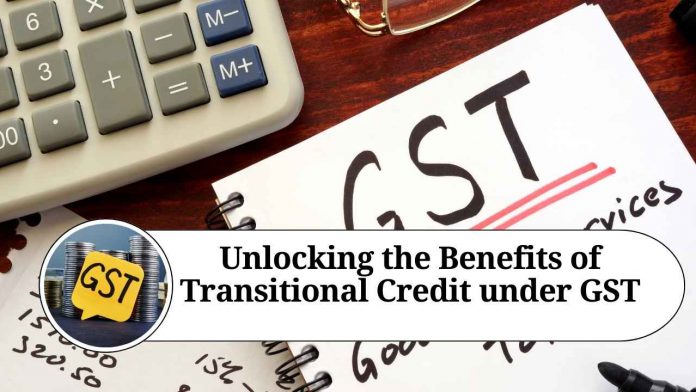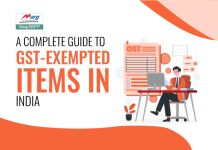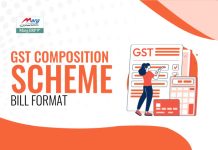Introduction
The Goods and Services Tax (GST) implementation in India has revolutionized the country’s taxation system. One of the crucial aspects of GST is the provision of transitional credit, which allows businesses to carry forward input tax credit from the pre-GST regime to the GST regime. This transitional credit mechanism eases the transition for businesses, ensures fairness, and helps them adapt to the new tax framework seamlessly. In this blog, we will delve into the concept of transitional credit under GST and explore its significance for businesses.
Understanding Transitional Credit:
Transitional credit refers to the unutilized input tax credit accumulated by businesses before the implementation of GST. Under the previous tax regime, businesses paid various indirect taxes, such as excise duty, VAT, and service tax. These taxes were embedded in the cost of goods or services. However, with the introduction of GST, these taxes were subsumed into a single tax, leading to a credit accumulation in the form of transitional credit.
Benefits of Transitional Credit:
Smoothing the Transition:
GST implementation involved a significant shift in the tax structure, affecting various aspects of business operations. Transitional credit acts as a bridge, allowing businesses to adjust to the new tax system without facing an immediate financial burden. It ensures a seamless transition by minimizing disruptions and aiding cash flow management.
Cost Reduction:
Transitional credit helps businesses reduce costs by offsetting the tax liability under GST. By carrying forward the accumulated credit, businesses can effectively lower their tax burden and enhance their financial viability. This provides an opportunity for businesses to invest in growth initiatives, expand their operations, and create new employment opportunities.
Promoting Compliance:
The availability of transitional credit incentivizes businesses to comply with GST regulations. By adhering to the necessary compliance requirements, businesses can utilize the accumulated credit effectively. This fosters a culture of tax compliance, promoting a transparent and efficient tax ecosystem.
Competitive Advantage:
Transitional credit can confer a competitive advantage on businesses. Companies that can avail and utilize a significant amount of transitional credit may offer their products or services at more competitive prices. This can attract customers, lead to increased market share, and ultimately drive business growth.
Industry-Specific Benefits:
Certain industries heavily relied on input tax credit under the previous tax regime. Transitional credit helps such industries, such as manufacturing and infrastructure, maintain their cost competitiveness. It provides them with the means to offset the tax liability incurred during the transition and supports their continuous operations.
Challenges and Considerations:
While transitional credit presents several benefits, businesses should also be aware of the challenges and considerations associated with its utilization. Some key aspects to keep in mind include:
Eligibility and Documentation:
Proper documentation and eligibility criteria must be met to claim transitional credit. Businesses need to maintain relevant records, invoices, and documents to validate their claims effectively.
Time Limitations:
There are time restrictions associated with claiming transitional credit. It is crucial for businesses to ensure timely compliance and submission of necessary forms to avail the credit.
Complexity:
Determining the amount of transitional credit and reconciling it with GST provisions can be complex. Businesses may require professional expertise or assistance to accurately calculate and utilize the credit.
Conclusion
Transitional credit plays a vital role in the successful implementation of GST and offers significant advantages to businesses. It facilitates a smooth transition, reduces costs, promotes compliance, and provides a competitive edge. However, businesses need to be mindful of the eligibility criteria, documentation requirements, and time limitations associated with claiming and utilizing transitional credit. By leveraging the benefits of transitional credit effectively, businesses can navigate the complexities of GST and unlock new growth opportunities in the dynamic Indian market.
Read more useful content:
Frequently Ask Question
Q1: What is transitional credit under GST?
A1: Transitional credit refers to the unutilized input tax credit accumulated by businesses before the implementation of the Goods and Services Tax (GST) regime. It allows businesses to carry forward the credit from the pre-GST era to offset their tax liability under GST.
Q2: Who is eligible to claim transitional credit?
A2: Any registered business that was eligible to claim input tax credit under the previous tax regime (such as excise duty, VAT, and service tax) and has the necessary documentation can claim transitional credit under GST.
Q3: What can transitional credit be utilized for?
A3: Transitional credit can be used to offset the tax liability under the GST regime. It can be utilized to pay GST on the supply of goods or services or for discharging any other GST liability, such as taxes on reverse charge mechanisms.
Q4: What documents are required to claim transitional credit?
A4: To claim transitional credit, businesses need to maintain and provide relevant documents, such as invoices, tax payment receipts, and other records from the pre-GST era that establish the eligibility and amount of transitional credit.
Q5: Is there a time limit to claim transitional credit?
A5: Yes, there are time limitations for claiming transitional credit. Generally, businesses need to submit the necessary forms and claim the credit within a specified time frame. It is important to adhere to these timelines to avail the credit.
Q6: Can transitional credit be claimed for all types of taxes paid under the previous regime?
A6: Transitional credit can generally be claimed for most taxes paid under the previous regime, including excise duty, VAT, and service tax. However, there may be certain exceptions or specific rules for certain taxes. It is advisable to consult a tax professional or refer to official GST guidelines for specific details.
Q7: Can transitional credit be transferred or sold to other businesses?
A7: No, transitional credit is not transferable or saleable. It can only be utilized by the business that originally accumulated the credit.
Q8: Can transitional credit be carried forward indefinitely?
A8: No, transitional credit cannot be carried forward indefinitely. There are specific provisions and time limitations for utilizing transitional credit. It is important for businesses to utilize the credit within the stipulated time frame to avoid any loss of benefits.
Q9: Are there any penalties for incorrect or false claims of transitional credit?
A9: Yes, incorrect or false claims of transitional credit can lead to penalties and legal consequences. Businesses should ensure that they have accurate documentation and meet the eligibility criteria before claiming transitional credit.
Q10: Can transitional credit be claimed on all types of goods and services?
A10: Transitional credit can generally be claimed on all eligible goods and services, provided they meet the requirements and conditions specified under GST laws. However, there may be certain goods and services that are specifically excluded from transitional credit eligibility. It is advisable to refer to GST guidelines or seek professional advice for specific details related to goods and services.




















